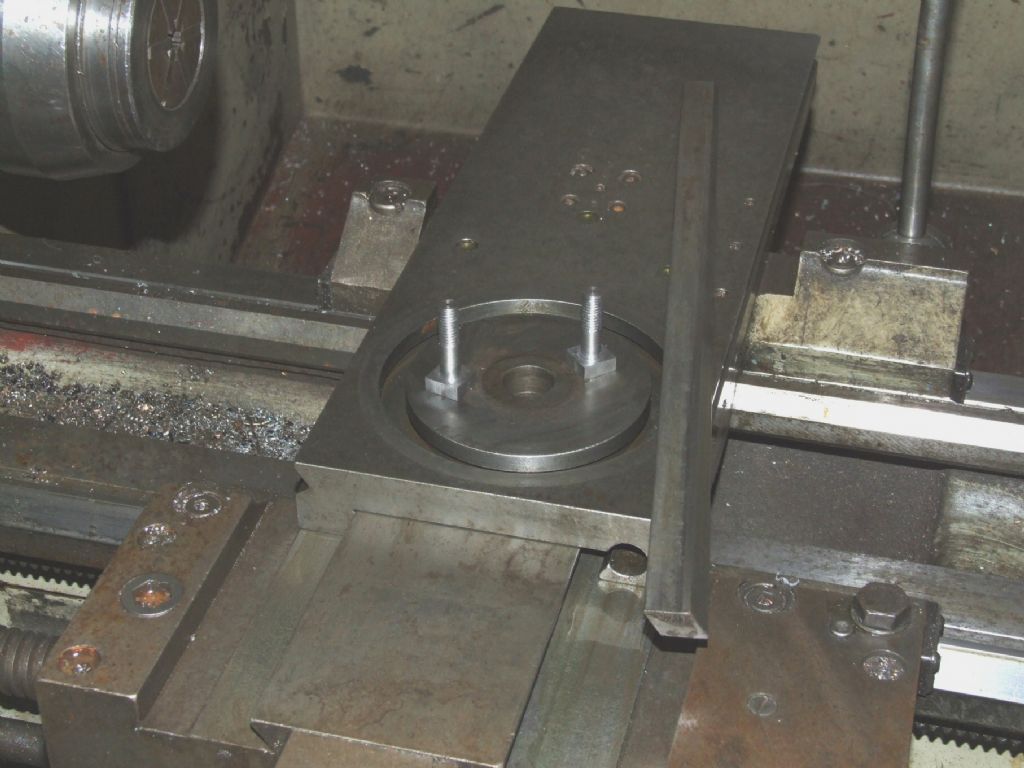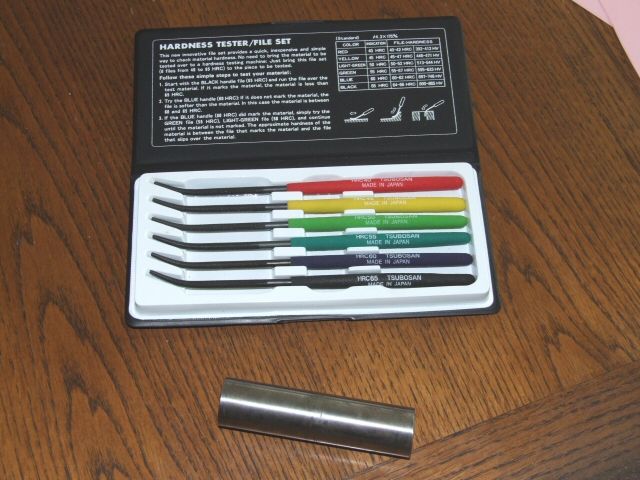Sorted! Thanks one and all for the suggestions; they helped me clarify my thoughts and identify the problem. A special mention for Nigel, who, in essence, identified the actual issue.
A quick look at a number of previous turning exercises showed a very slight banding on stainless steel, but on nothing else as far as I could see. This tells us the problem is not specifically related to silver steel, but may be related to tougher materials, and hence higher cutting forces. My lathe is a Harrison M300, on the makers stand, and solidly bolted to a concrete floor. It is three phase and runs from a true three phase supply. The chuck is a Burnerd high speed collet chuck. Thus I discounted vibration from the machine itself, or the main motor. I calculated a few frequencies for spindle speed and the rough frequency of the banding, but no obvious resonances sprang to mind. I didn't do the calculations for the drive train, as the fine feeds are driven by a separate drive shaft rather than the leadscrew.
Now what I didn't tell you is that the cross slide is a fairly easy fit, and one of the bolts that holds the top slide down is a bit iffy.  Yes, I know it's obvious in retrospect but us country boys are a bit slow on t'uptake.
Yes, I know it's obvious in retrospect but us country boys are a bit slow on t'uptake.
The task this morning was to make and fit two new T-bolts for the top slide, like this:

As an aside I discovered that the cross slide tapered gib has a special brass insert and grub screw pressing on it from the side of the cross slide, as well as the normal adjustment screws each end. I never knew that! It's not mentiond in the manual either, although it is shown in the exploded parts drawing.
With everything cleaned, adjusted and re-assembled I tried another couple of tests on the original silver steel bar. Both tests were done at 1200rpm, 0.2mm radius insert, depth of cut 20 thou, and feedrate 2 thou/rev, one test with coolant, one without. In both cases the swarf came off as a long open spiral. Both surfaces look pretty uniform under the magnifying glass, with just a hint of tearing in places, although the finish doesn't feel rough. Surface roughness measurements (Ra, µm) are:
With coolant: 2.15 1.72 2.10 Average=1.99
Without coolant: 1.40 1.55 1.40 Average=1.45
So in this case without coolant seems better, which is what I would have originally expected.
As is so often the case the solution to what seems to be a mysterious effect is actually very simple, in this case operator stupidity.  I should have fixed the iffy bolt issue long ago.
I should have fixed the iffy bolt issue long ago.
Regards,
Andrew
HasBean.













